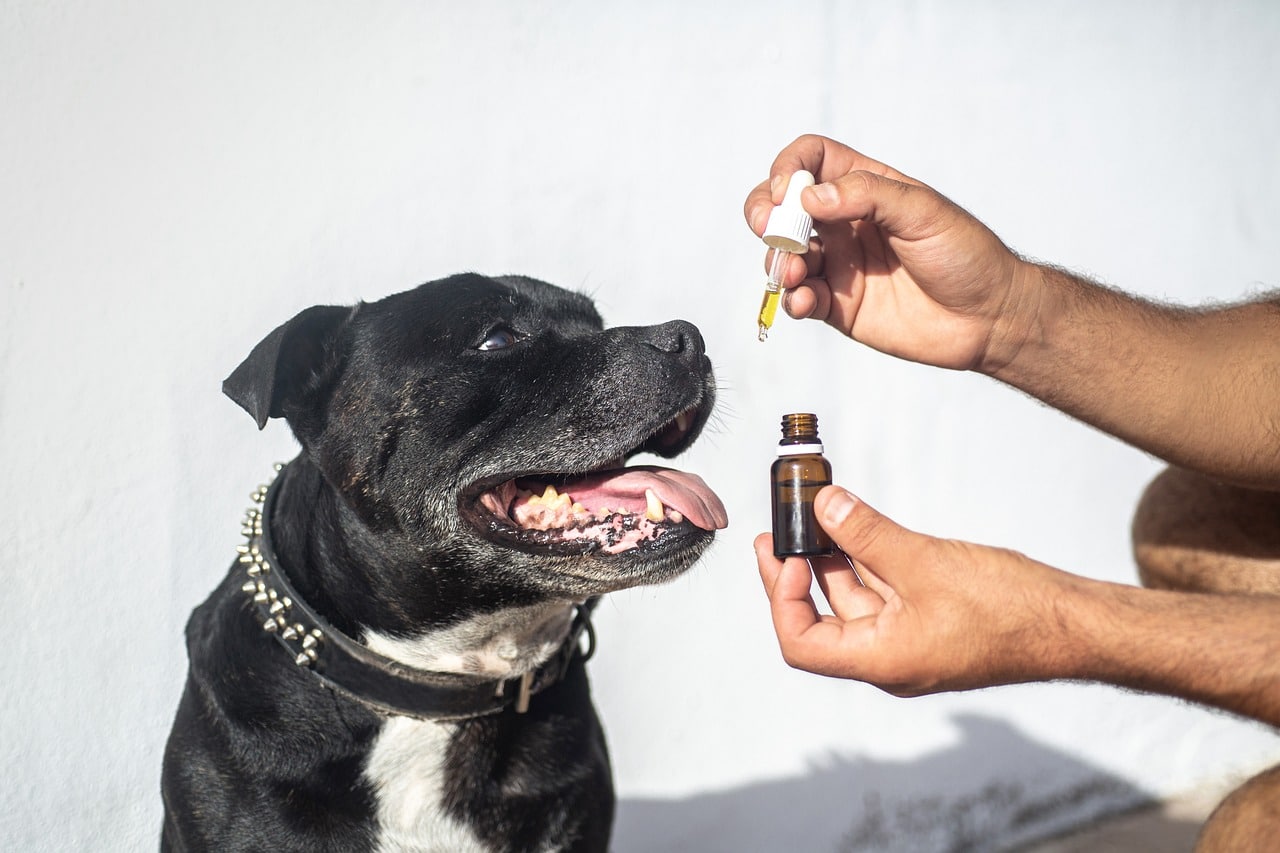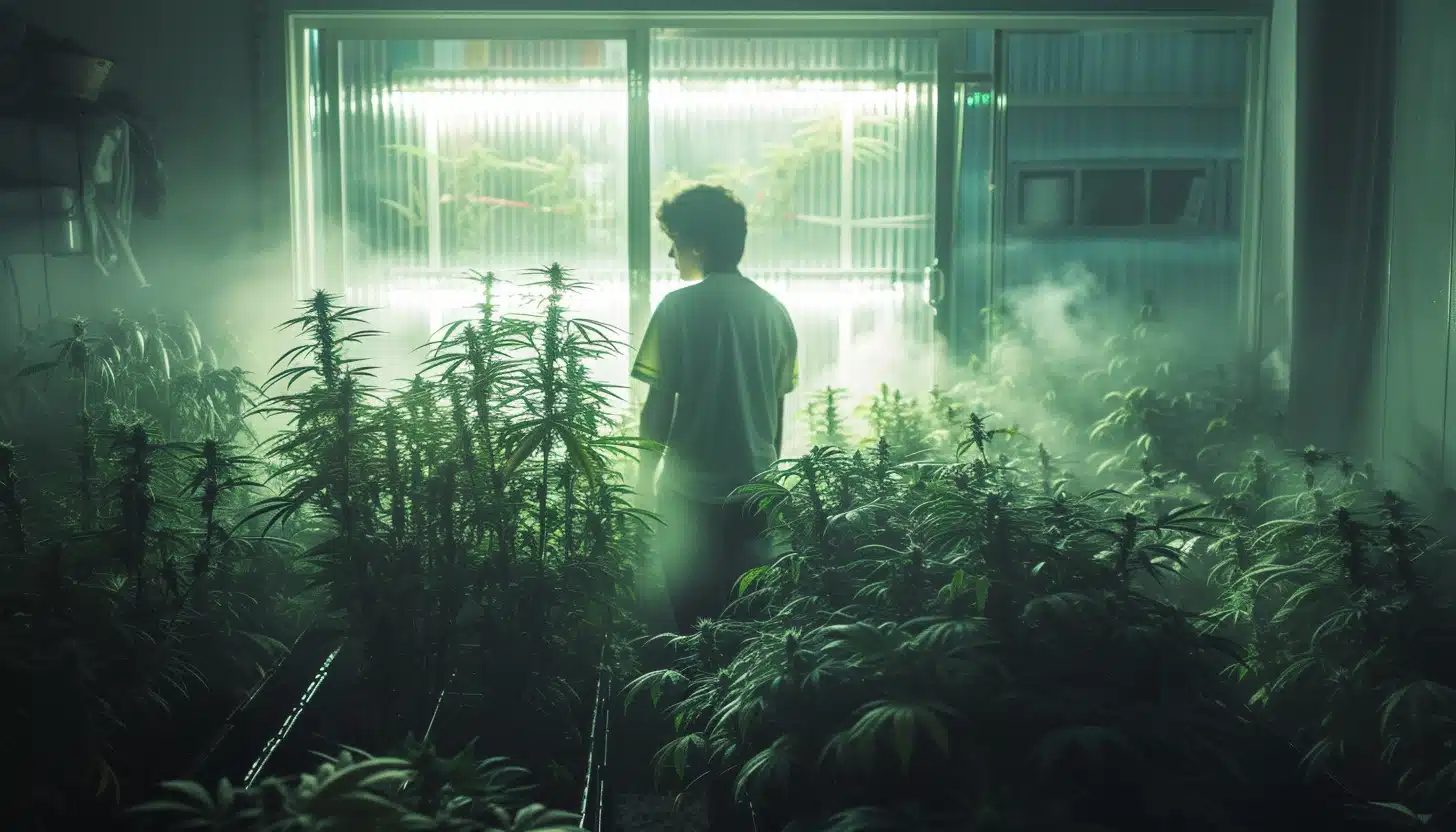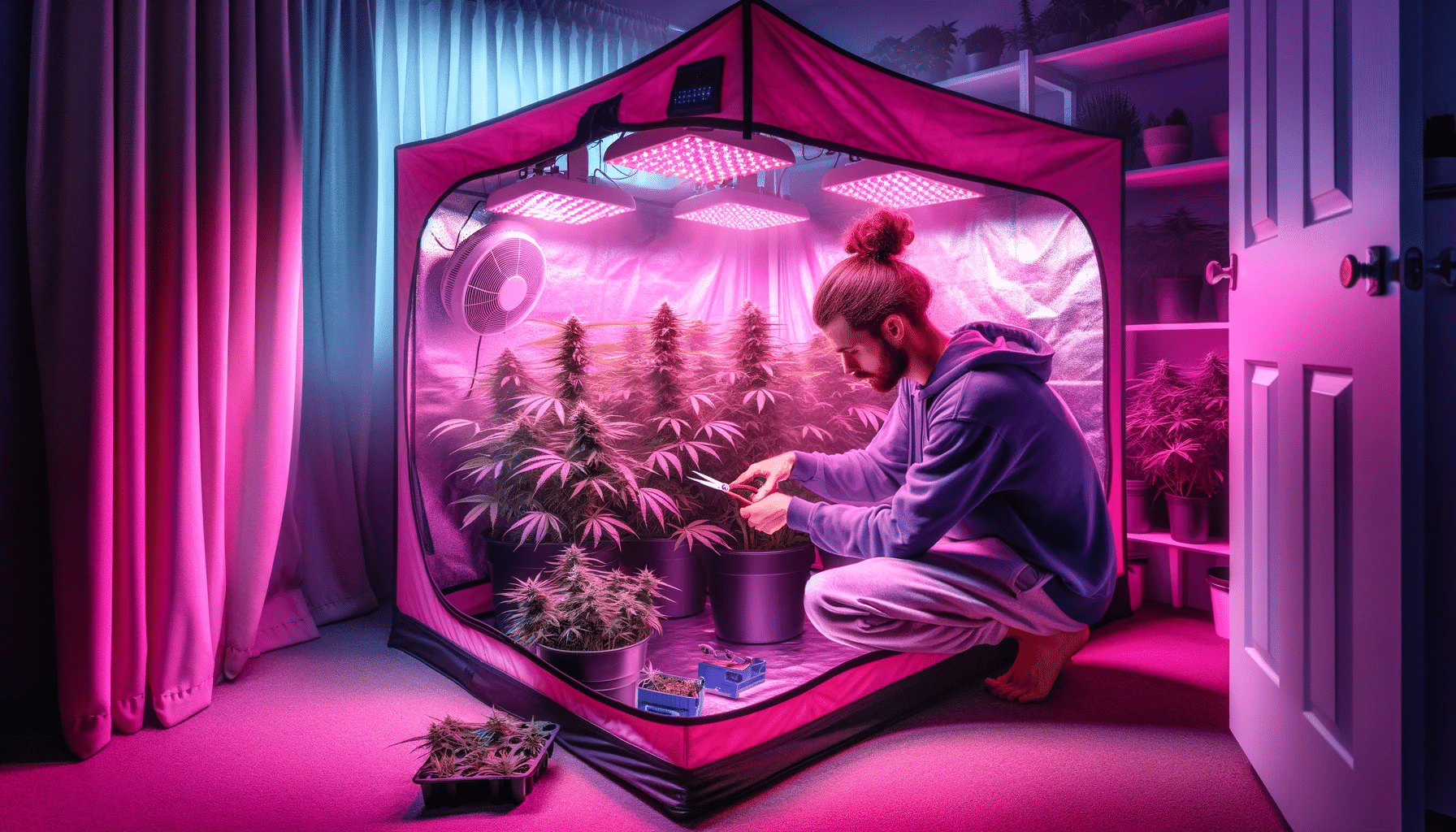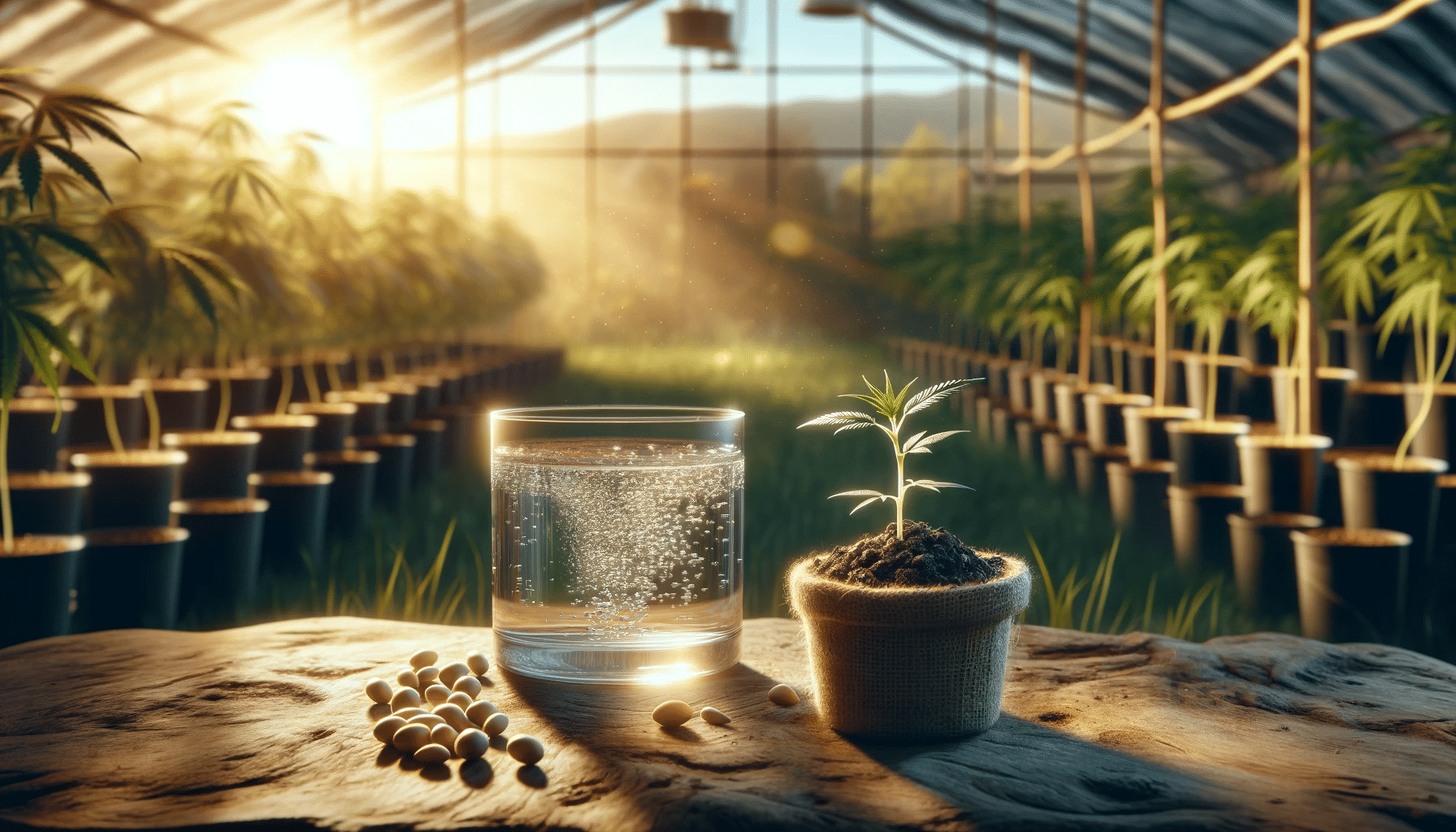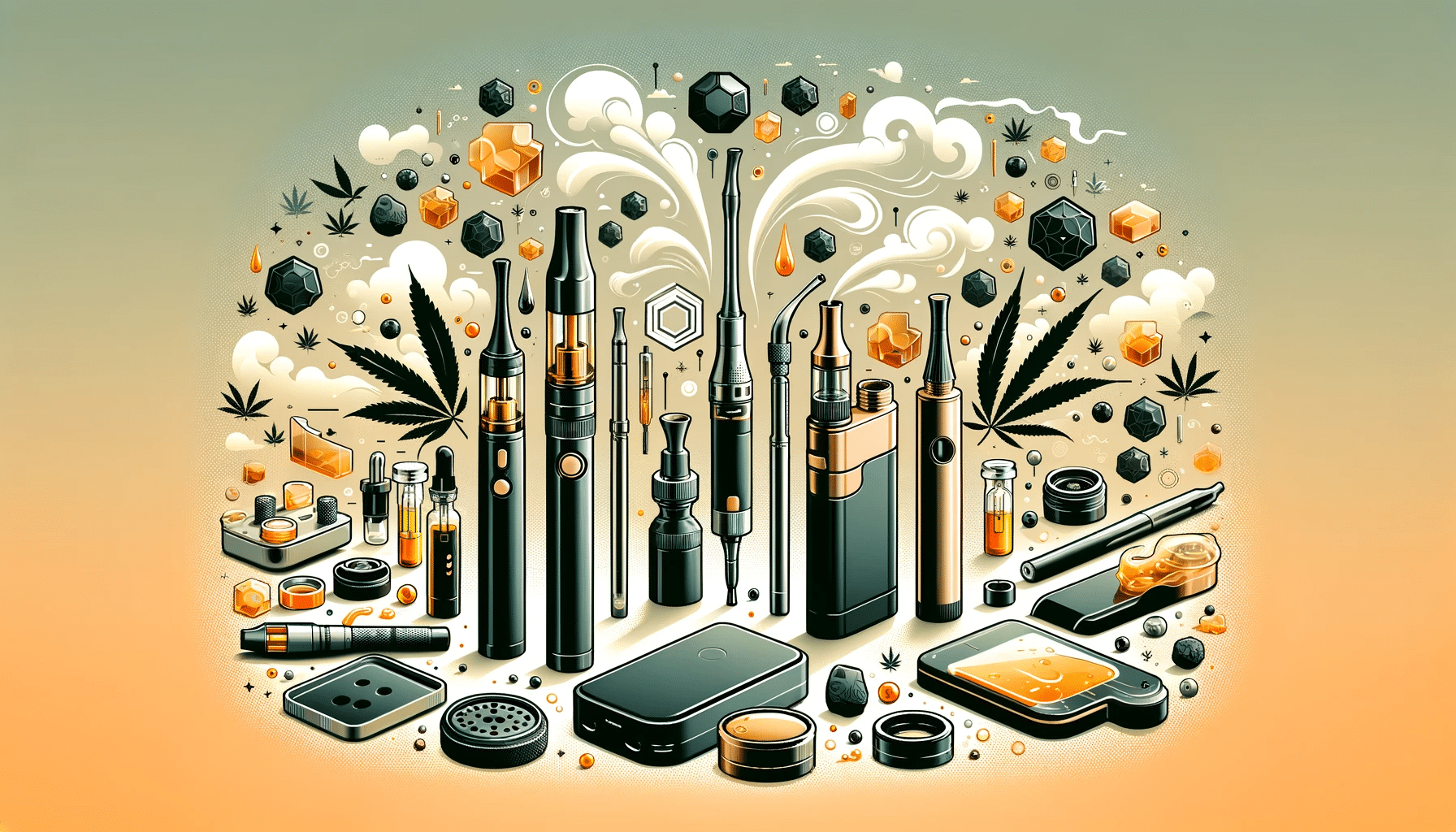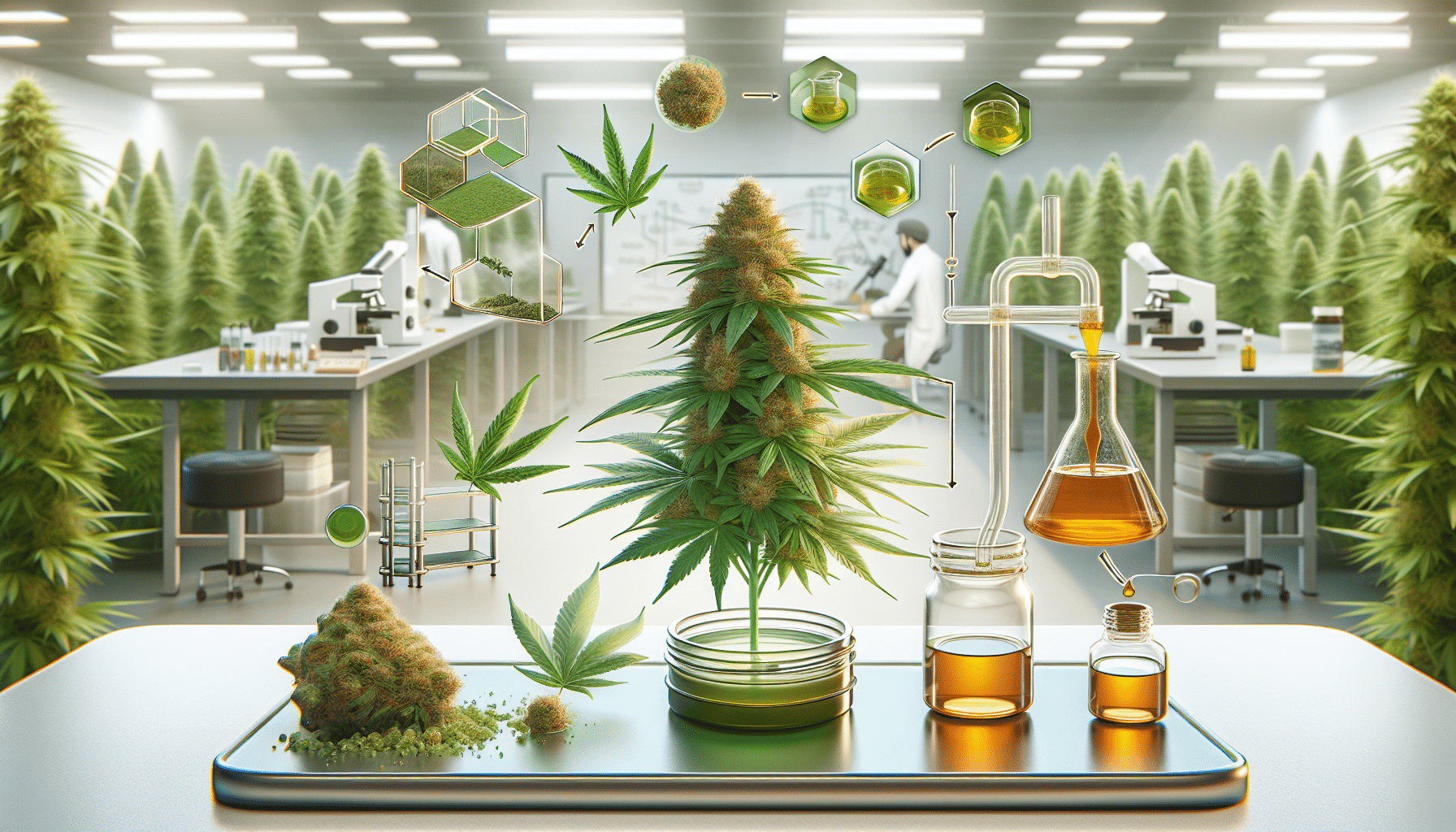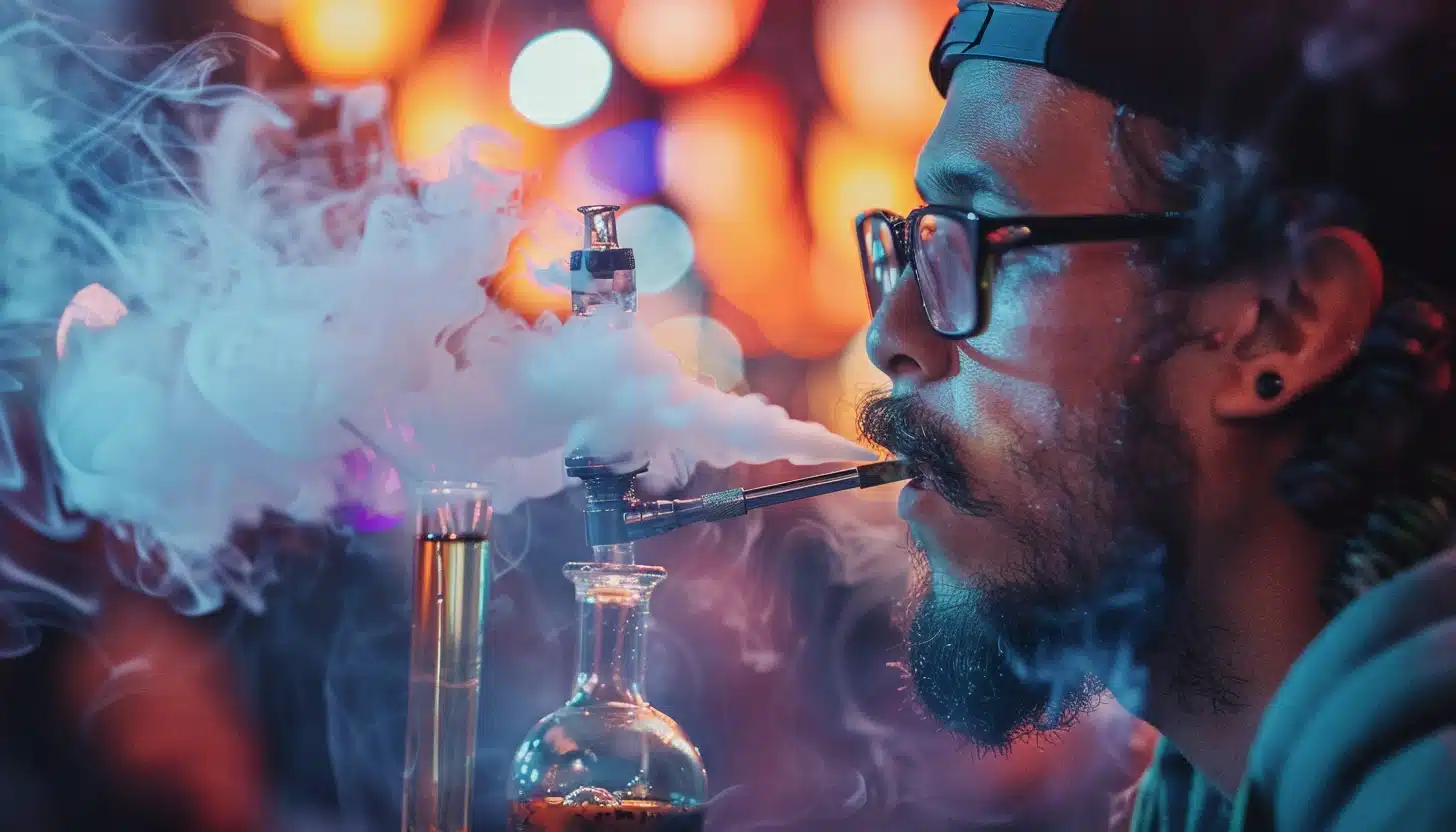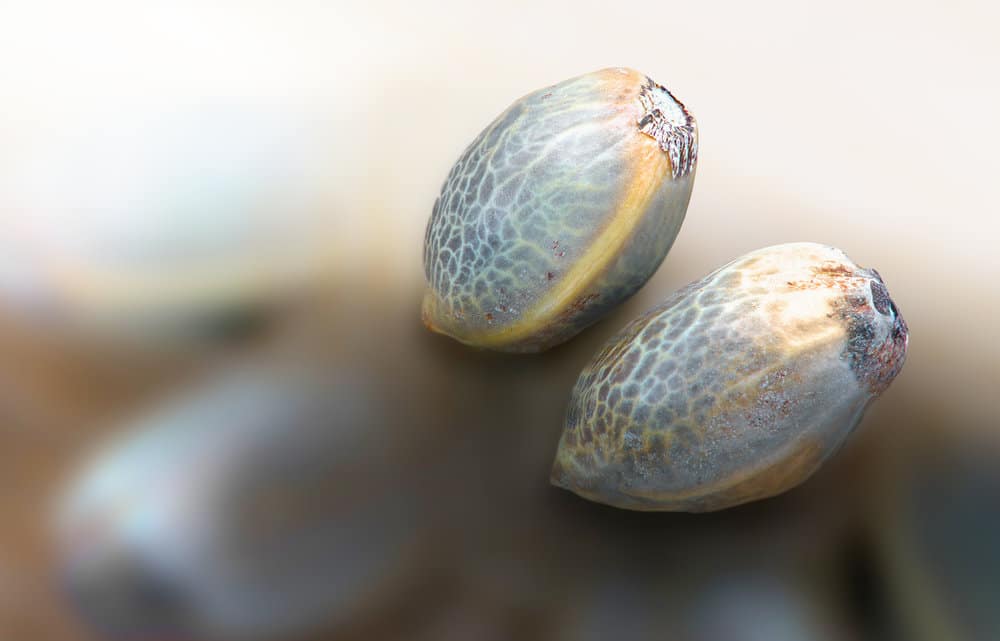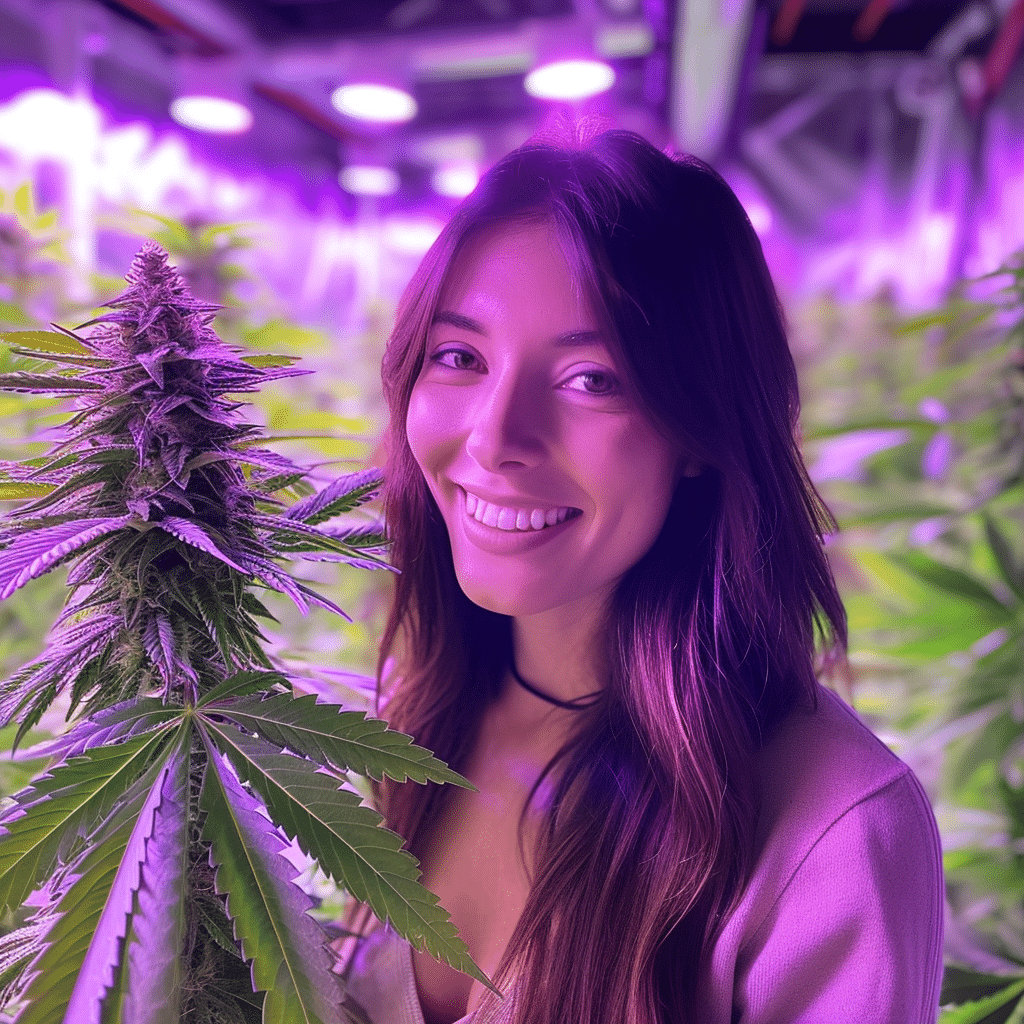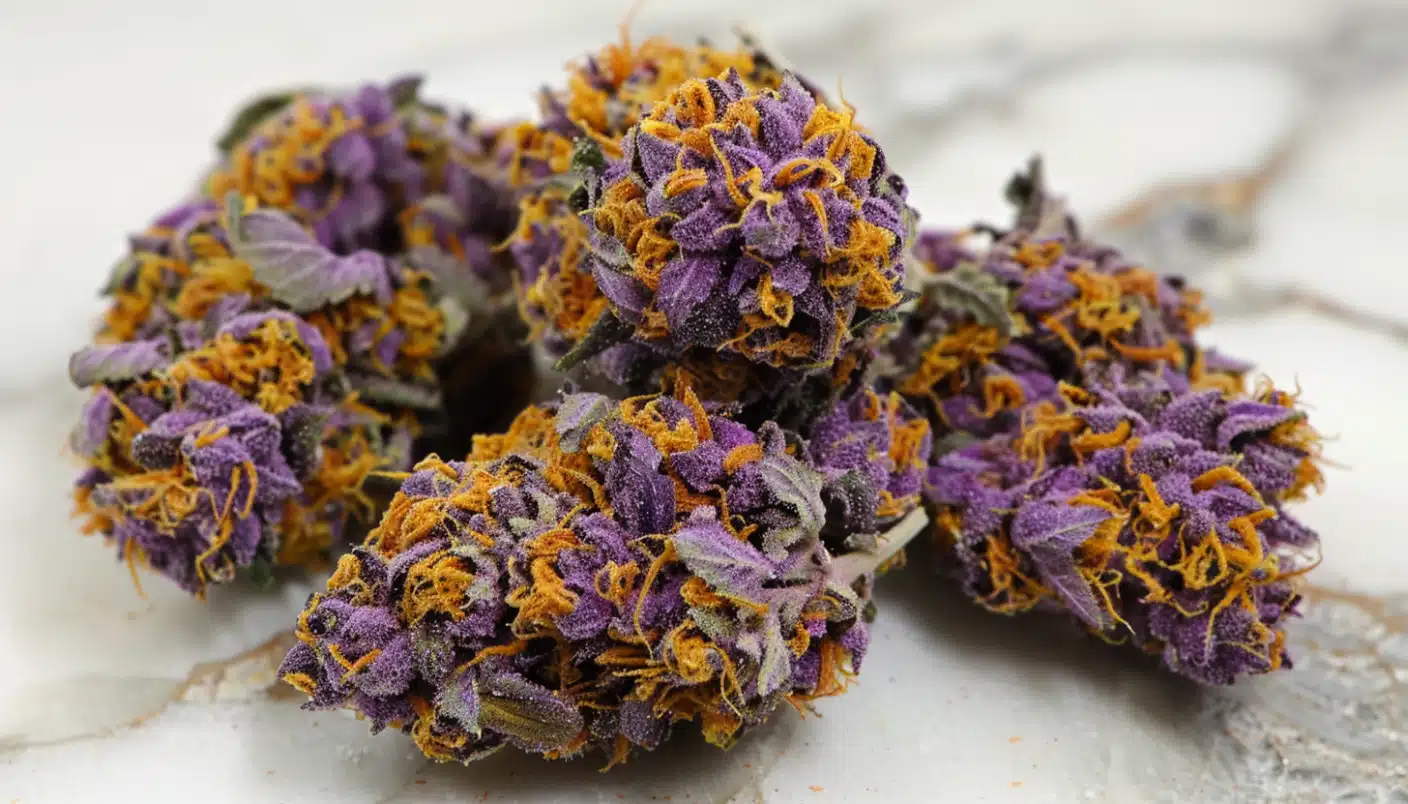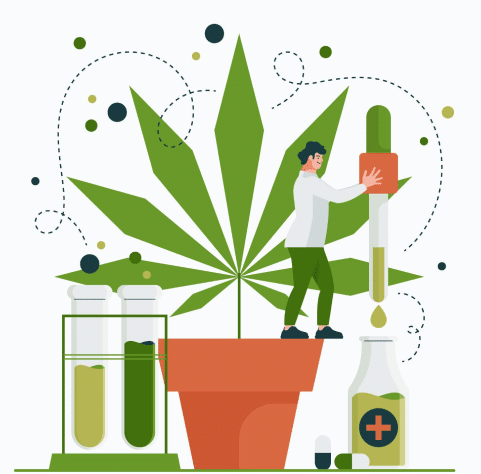
Introduction
The art of cannabis cultivation reaches its pinnacle at harvest time. This crucial phase demands precision and understanding from most growers, as the timing of the harvest significantly influences the entire plant’s potency, flavor, and medicinal properties. Mastering the harvest process ensures that all the hard work and care put into growing cannabis culminates in the highest quality product.
Part 1: Understanding the Cannabis Flowering Cycle
Cannabis, a plant with a complex life cycle, undergoes a significant number of transformations before it reaches full maturity. The flowering stage is particularly critical. It begins when the plant receives fewer hours of light per day, either naturally or through controlled lighting in indoor grows. This stage can last anywhere from 6 to 12 weeks, depending on the strain. Indica strains generally have a shorter flowering period compared to Sativas, which require more time to mature.
The Stages of Cannabis Growth:

To grow healthy cannabis, it’s crucial to understand the key growth stages from germination to flowering. Each phase (germination, seedling, vegetative, and pre-flowering) impacts the plant’s light, nutrient, and care needs. These stages determine the optimal time for harvesting.
As the the plant matures and progresses to the flowering stage, the timing to harvest marijuana becomes crucial. This final stage significantly impacts the potency, flavor, and yield of the cannabis buds. For growers, whether small scale or commercial, mastering the timing and care during the flowering phase ensures that the cannabis harvest aligns with the plant’s peak maturity. Achieving optimal resin production and cannabinoid profiles in their marijuana plants becomes a testament to their cultivation skills.
Key Stages in Cannabis Plant Growth for Ideal Harvest Timing:
-
-
Germination (1-2 weeks): Seeds sprout, needing moisture and warmth.
-
-
-
Seedling Stage: Development of embryonic leaves, requiring 16-18 hours of light.
-
-
-
Vegetative Stage (3-16 weeks): Rapid growth in leaves and stems, with high nitrogen needs and extended light hours.
-
-
-
Pre-Flowering Stage (1-2 weeks): Plants show sex, triggering flowering with 12-hour light cycles.
-
-
-
Flowering Stage (6-12 weeks): Bud development with reduced light; requires phosphorus and potassium.
-
This summary highlights the essential stages of cannabis’ growth cycle, focusing on the factors that influence the harvest time of cannabis plants.
Light Cycles and Flowering:
-
-
Photoperiod Dependence: Cannabis plants typically rely on changes in the light cycle to transition from the vegetative to the flowering stage. Indoor growers use grow lights to control this transition.
-
-
-
Indoor vs. Outdoor Flowering: Indoor growers can induce flowering at any time by adjusting light schedules. Outdoor growers depend on the natural change in day length, with flowering usually occurring in late summer and early autumn.
-
-
-
Light Quality and Spectrum: During the flowering stage, plants benefit from a light spectrum with more red wavelengths, mimicking the natural sunlight of the late growing season.
-
Varietal Differences:
When to harvest cannabis plants depends in part on the varietal differences between the different types of marijuana plants. For faster flowering plants, look to choose Indica varieties.
Determining when to harvest cannabis involves understanding the varietal differences among Indica, Sativa, Hybrid, and Autoflower varieties. Indica strains, known for shorter, 6-9 week flowering periods, are ideal for colder climates and yield dense, resinous buds with relaxing effects. In contrast, Sativas, requiring 10-14 weeks to flower, have more buds that grow taller and are suited for warmer climates, producing lighter buds that offer an energetic high.
Hybrid strains blend Indica and Sativa traits, varying widely in flowering time and characteristics based on their genetic mix. Autoflowers, independent of light cycles, flower automatically about 2-4 weeks after germination. They’re compact, quick-growing, and suitable for continuous harvests, but typically have smaller yields and potentially lower THC levels than photoperiod strains. Understanding these nuances helps in planning the harvest time for maximum potency and yield in different cannabis plants.
When planning the harvest of Indica cannabis strains, it’s crucial to consider their characteristic effects and optimal harvest timing. Indicas, known for their dense, resinous buds, typically have a flowering period of 6-9 weeks and are suited for colder climates. Harvesting these strains at the right time is key to achieving their renowned relaxing effects without veering into overly sedative territory.
If harvested too late, Indica buds can develop a very heavy stone, potentially leading to an intense “couch-lock” experience, where users feel extremely lethargic and physically relaxed to the point of immobility. This is often due to the higher levels of CBN that develop as THC degrades over time. To avoid this, growers should monitor trichome development closely, aiming for a balance between milky white and amber trichomes to ensure the desired potency and effect.
Part 2: Key Indicators for When to Harvest Cannabis
Trichome Examination:
-
-
Understanding Trichomes: Trichomes are tiny, crystal-like structures on the buds and leaves of cannabis plants. They contain cannabinoids like THC and CBD and terpenes that give the plant its aroma and flavor.
-
-
-
Examining Trichome Color and Clarity: Use a magnifying glass or jeweler’s loupe to observe the trichomes. Clear trichomes indicate the plant is too young. Milky or cloudy trichomes suggest peak THC levels, ideal for a more psychoactive effect. Amber trichomes indicate higher CBD levels and a more sedative effect.
-
-
-
Trichome Shape and Structure: Apart from color, the shape of trichomes can also indicate maturity. Mature trichomes have a mushroom-like head on a stalk, whereas immature ones may not have fully developed heads.
-
Pistil Changes:
-
-
Observing Pistil Development: Pistils, or the hair-like structures on the buds, start off white and straight. As the plant matures, these pistils darken and curl.
-
-
-
Pistil Coloration: The pistils turn orange, red, brown, or even purple, indicating maturity. Generally, when around 70-80% of the pistils have changed color and curled, it’s an indicator that the plant is nearing harvest.
-
Bud Appearance and Texture:
-
-
Bud Density and Swelling: Mature buds are usually dense and tightly packed. The swelling of the calyxes, the teardrop-shaped structures at the base of the buds, indicates a high level of ripeness.
-
-
-
Stickiness and Resin Production: As the plant approaches maturity, the buds become stickier due to increased resin production, which is a good sign of a healthy and potent plant.
-
-
-
Fragrance and Aroma: The smell of the buds becomes more pronounced as they mature. This change in aroma is due to the increased production of terpenes.
-
Leaf Changes:
Part 3: Tools and Techniques for Monitoring
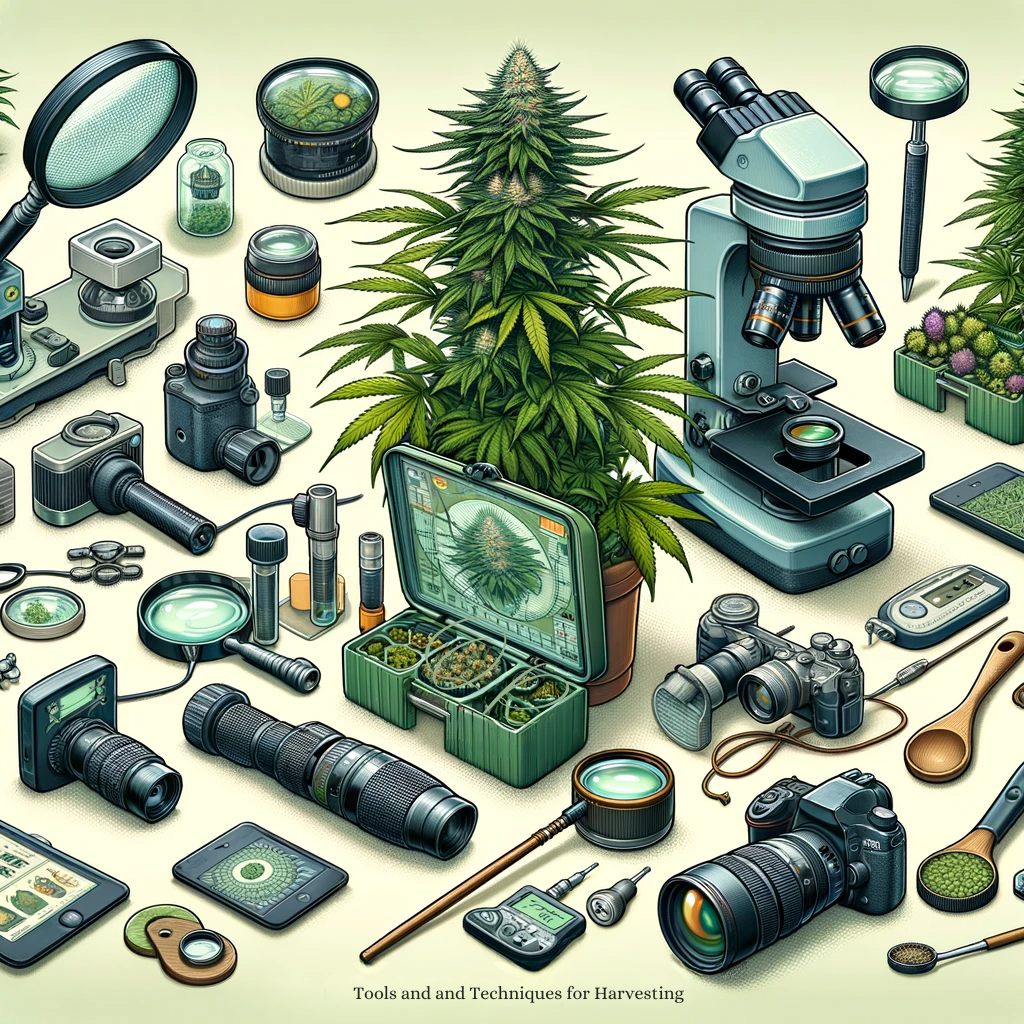
Modern cannabis cultivation has benefited greatly from advancements in technology, particularly in monitoring and inspection tools. Accurately determining the right harvest time is a blend of art and science, where growers employ various advanced tools and techniques
Magnification Tools:

-
-
Jeweler’s Loupes: These portable magnifiers are a staple for growers to inspect trichomes up close. They typically offer 30x to 60x magnification, providing enough detail to assess trichome color and structure.
-
-
-
Handheld Microscopes: Offering higher magnification (up to 100x or more), these microscopes provide a more detailed view of trichomes, allowing growers to make more precise judgments about the maturity of their plants.
-
-
-
Digital Microscopes: A more modern option, digital microscopes connect to computers or smartphones, offering high-resolution images and videos of trichomes. They allow for greater magnification and the ability to record and share images for a more thorough analysis.
-
Photographic Documentation:
-
-
Photographic Documentation:
-
-
Smartphone Cameras: The advancement in smartphone camera technology allows for high-quality documentation of plant growth. Growers can use macro lenses and apps for detailed imaging.
-
-
-
Time-Lapse Photography: Utilizing cameras that can capture time-lapse videos helps in observing the subtle growth and changes in the plant over time, providing insights into the plant’s health and development stages.
-
-
-
Infrared and UV Imaging: Some growers use specialized imaging to assess plant health, detect pests, or issues not visible to the naked eye.
-
-
-
-
-
Grow Journals:
-
-
Digital Journals: Leveraging digital platforms for record-keeping allows growers to integrate photos, videos, and notes in one place. Apps and software designed for cultivation can track growth patterns, feeding schedules, and environmental changes.
-
-
-
Data Analysis Tools: Incorporating data analytics into grow journals can help in predicting harvest times more accurately based on historical data and growth patterns.
-
-
-
Online Communities and Resources: Many growers utilize online forums and platforms to compare notes, seek advice, and share experiences. This communal knowledge can be invaluable in refining cultivation techniques.
-
-
-
-
-
Environmental Monitoring Tools:
-
-
Hygrometers and Thermometers: Keeping track of humidity and temperature is crucial in a grow space. Digital hygrometers and thermometers can provide real-time data and even historical trends.
-
-
-
Soil pH and Moisture Meters: These tools help in maintaining the right soil conditions. pH levels can affect nutrient uptake, and moisture meters ensure plants are neither over nor under-watered.
-
-
-
Smart Growing Systems: Automated systems equipped with sensors can monitor and adjust environmental conditions, including light, temperature, and humidity, ensuring optimal growth conditions.
-
-
-
Part 4: Harvesting Based on Desired Effects
-
-
This section of the article explores the critical role of harvest timing in shaping the chemical profile of cannabis, especially the concentrations of THC and CBD. These variations directly impact the user’s experience, highlighting the importance of precise timing to achieve the desired effects.
-
THC vs. CBD Levels:
-
Understanding Cannabinoids: THC (Tetrahydrocannabinol) and CBD (Cannabidiol) are the most well-known cannabinoids found in cannabis, each with distinct effects. THC is known for its psychoactive properties, while CBD is non-psychoactive and known for its therapeutic benefits.
-
Biochemistry of Cannabinoids: THC and CBD are produced in the trichomes of the cannabis plant. Their levels vary throughout the flowering stage. THC acid (THCA), the non-psychoactive precursor to THC, converts to THC with heat or over time. Similarly, Cannabidiolic acid (CBDA), turns into CBD.
-
Cannabinoid Transformation: During flowering, the concentration of THCA and CBDA increases. Harvesting at different times affects the ratio of these cannabinoids. For instance, earlier harvests have higher THCA (and upon decarboxylation, THC), while later harvests see a rise in CBN (Cannabinol), a degradation product of THC known for its sedative effects.
-
-
Early vs. Late Harvest:
-
Impact on Potency and Flavor: Harvesting cannabis when trichomes are clear (early harvest) tends to yield a product with lower THC levels and a more ‘uplifting’ effect. Waiting until trichomes turn amber (late harvest) typically results in higher CBD or CBN levels, producing a more ‘relaxing’ effect.
-
Expert Opinions and Data: Many cultivators base their harvest time on their desired product outcome, guided by empirical data and personal experience. For example, medical cannabis growers might prefer a late harvest for higher CBD content, beneficial for patients seeking pain relief without intense psychoactive effects.
-
-
Strain-Specific Considerations:
-
Tailoring Harvest Time: Different strains of cannabis have unique cannabinoid profiles and react differently to harvest timing. Understanding the genetic background and characteristics of each strain is crucial for optimal harvest timing.
-
Profiles of Popular Strains: For example, a strain like Sour Diesel (a Sativa-dominant hybrid) might be harvested earlier to maximize its energizing and uplifting effects. In contrast, an Indica-dominant strain like Granddaddy Purple might be harvested later to enhance its relaxing and sedative qualities.
-
Effects of Harvesting at Various Stages: Each strain has a window of time where its specific cannabinoid profile is optimal. For some strains, this window might be narrow, requiring precise timing to capture the desired balance of THC, CBD, and other cannabinoids.
-
Understanding these aspects of cannabis biochemistry and the effects of different harvest timings is essential for cultivators to produce a product that meets their specific goals, whether they are recreational, medicinal, or a combination of both.
-
-
Part 5: Step-by-Step Guide on When to Harvest Cannabis Plants

Harvesting cannabis is a critical and meticulous process that requires careful planning and execution by many growers. Each step, from preparation to post-harvest processing, plays a vital role in ensuring the quality of the final product.
-
-
Pre-Harvest Preparation:
-
-
Gathering Tools: Essential tools include sharp scissors or pruning shears for precise cutting, gloves to protect both hands and buds from contamination, drying racks for even air circulation around the buds, and airtight containers for curing.
-
-
-
Preparing the Drying Area: The drying area should be clean, dark, and well-ventilated with controlled temperature (around 60-70°F) ‘on the cooler side’ and humidity (45-55%). This environment prevents mold growth and preserves the quality of the terpenes and cannabinoids.
-
-
-
Sanitation: Ensure all tools and the drying area are sanitized to prevent any contamination that could spoil the buds.
-
-
-
-
-
The Harvesting Process:
-
-
Cutting the Plants: Begin by carefully cutting the plants at the base. Some growers prefer to harvest in sections, especially for larger plants, to manage the drying process more efficiently.
-
-
-
Trimming Leaves: Remove the larger fan leaves first, as they contain fewer trichomes. This step can be done before or after cutting the plant down.
-
-
-
Delicate Bud Trimming: Using sharp scissors, delicately trim the smaller sugar leaves that are close to the buds. Be cautious not to damage the trichomes as they contain the majority of the plant’s cannabinoids and terpenes. Some growers prefer wet trimming (trimming immediately after cutting the plant) or dry trimming (trimming after the buds have dried).
-
-
-
-
-
Post-Harvest Processing:
-
-
Drying: Hang the trimmed branches or place the buds on drying racks. Drying should be slow and steady; rushing this process can diminish the quality of the final product. The ideal drying time is typically about 7-10 days.
-
-
-
Curing: Once the buds are dry (stems snap but don’t break cleanly), cure them in airtight containers. Store the containers in a cool, dark place. Open the containers several times a day during the first week for a few minutes to allow for air exchange and to release any moisture. This process can last from two weeks to several months, depending on the desired outcome.
-
-
-
Monitoring: Throughout the curing process, monitor for any signs of mold and check the moisture level. Proper curing enhances the flavor, smoothness, and overall quality of the cannabis.
-
-
-
This step-by-step guide aims to help cultivators through the critical phases of cannabis harvesting, ensuring they preserve the integrity and quality of their own plants grow hard-earned cannabis buds throughout. Each step, from pre-harvest preparation to post-harvest processing, requires attention to detail and patience to achieve the best possible outcome for individual buds.
Part 6: Common Mistakes to Avoid During Harvest
Harvesting prowess involves not just timing and technique, but also an awareness of potential pitfalls. Avoiding these common mistakes is crucial for ensuring the quality of the final product.
-
-
Incorrect Timing of Harvest:
-
-
Harvesting Too Early: Harvesting cannabis before it reaches full maturity can significantly reduce the potency and yield. Early-harvested buds might have underdeveloped trichomes, leading to a lower concentration of THC and other cannabinoids. The effects of the final product might be less intense and shorter-lasting.
-
-
-
Harvesting Too Late: Waiting too long to harvest can also be detrimental. Overripe trichomes can degrade, converting THC into CBN, resulting in a product that is less psychoactive and more sedative. Additionally, the overall aroma and flavor profile may deteriorate over time.
-
-
-
-
-
Improper Handling of Buds:
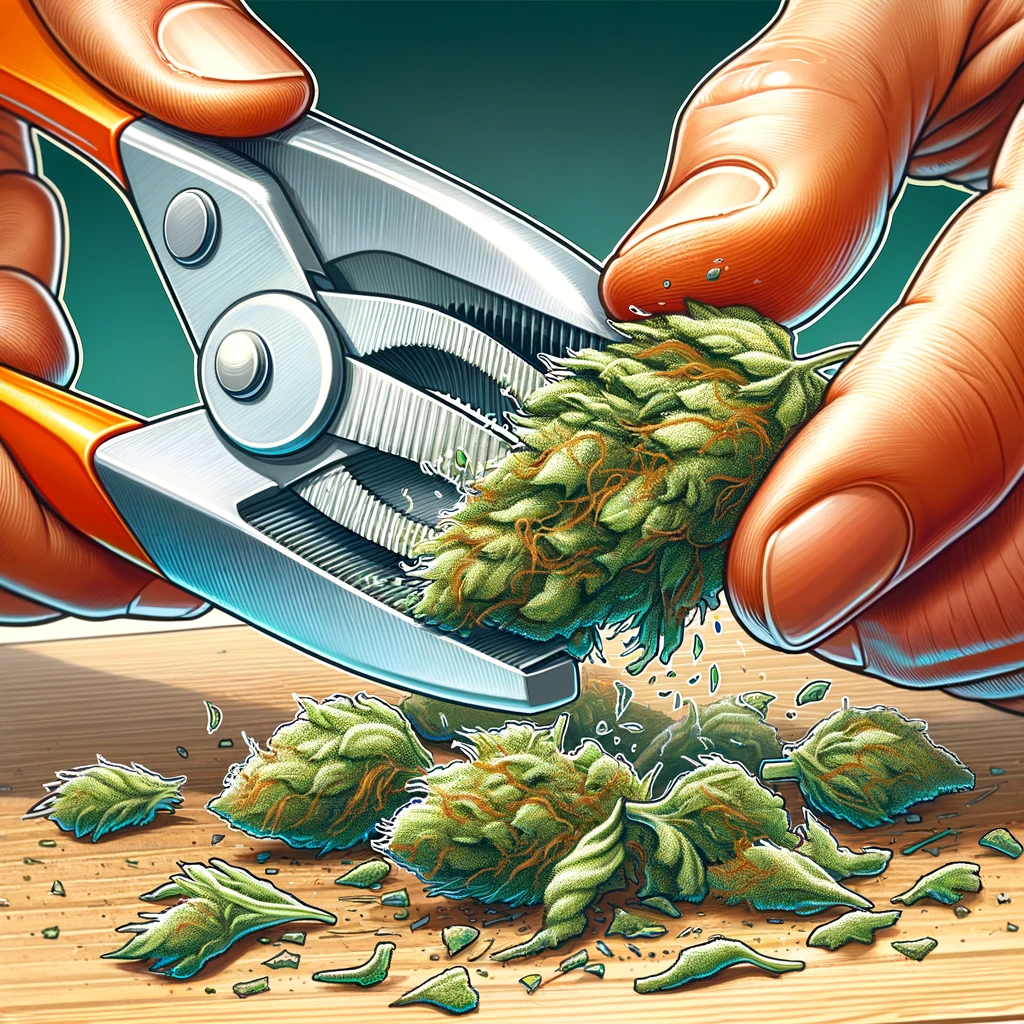
-
-
Rough Trimming: Handling the buds roughly during trimming can knock off the trichomes, where most of the cannabinoids and terpenes are stored. This can significantly reduce the quality and potency of the buds.
-
-
-
Contamination: Buds are highly susceptible to contamination from mold, bacteria, and even human touch. Always wear gloves and use sanitized tools to avoid contaminating the trichomes during the trimming process.
-
-
-
-
-
Inadequate Drying and Curing:
-
-
Rushing the Drying Process: Drying the buds too quickly can trap chlorophyll, leading to a harsh and unpleasant taste. Proper drying should be a slow and controlled process.
-
-
-
Improper Curing: Failing to properly cure the buds can result in a less potent and flavorful product. Curing helps to break down chlorophyll and enhances the overall quality of the cannabis. It should be done in a controlled environment to prevent the growth of mold and bacteria.
-
-
-
-
-
Environmental Factors:
-
-
Humidity and Temperature: Not maintaining the right humidity and temperature levels during the drying and curing process can lead to the development of mold and mildew. This not only ruins the cannabis but can also pose health risks.
-
-
-
Light Exposure: Excessive light exposure during the drying and curing process can degrade cannabinoids and terpenes, reducing the quality of the final product.
-
-
-
-
-
Neglecting Plant Health in Late Flowering Stage:
-
-
Nutrient Issues: Overfeeding or underfeeding the plant during the late flowering stage can stress the plant, affecting bud development. It’s important to monitor and adjust nutrient levels according to the plant’s stage of growth.
-
-
-
Pest and Disease Control: Failure to control pests and diseases in the late flowering stage can significantly impact the quality and yield of the harvest. Regular inspections and appropriate measures should be taken to keep plants healthy.
-
-
-
Avoiding these common mistakes requires attention to detail, patience, and a thorough understanding of the cannabis plant’s needs. By doing so, cultivators can ensure they harvest high-quality, potent, and safe cannabis.

